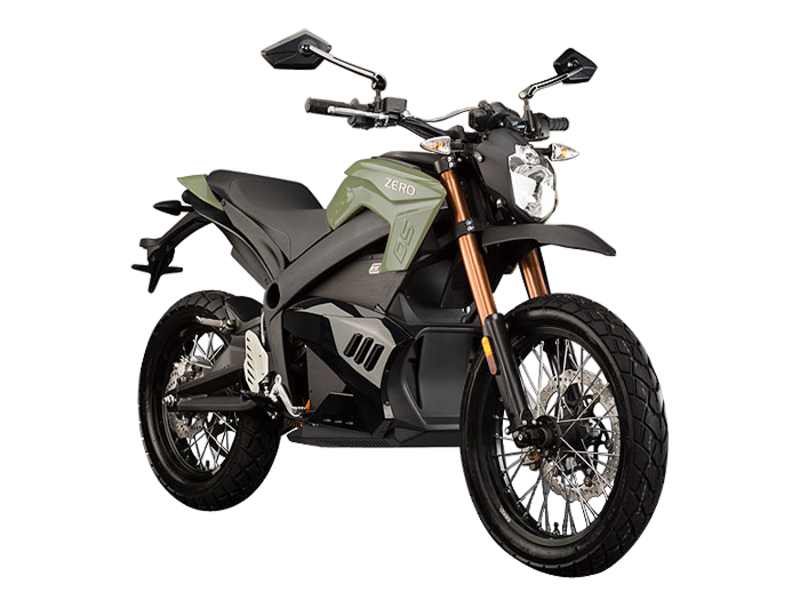
Intro
Zero Motorcycles broke new ground in the industry when it introduced the Zero DS in 2010. The dual-sport bike has an electric engine powered by a battery that does not contain toxic chemicals, making it appealing to eco-friendly riders as well as bikers who want something fun to tool around town on. It is better suited to bikers who don‘t ride long distances or at high speeds.
Available in red, white, or blue, the 2010 DS weighs 277 pounds, including the 95-pound battery pack. Street-legal, the electric motorcycle has on/off road knobby tires, 17 inches in front and 16 inches on the rear. It is powered by a lithium-ion manganese battery (Li-ion) that was designed and made at the California company’s plant. The battery does not contain toxic materials, which means it can be disposed of in local landfills.
The 18-pound perimeter frame is aluminum; the body is plastic. The vinyl one-piece seat is 35 inches high. It has a unique square-tube kickstand. Though it is an electric bike, Zero uses a fuel gauge meant for a gasoline engine since a gas pump shows how much charge is left. A green shift light indicates the battery is charged.
The Agni motor runs so quietly, new-to-DS riders may think the engine died at stops and inadvertently rev it up in place, thus thrusting the motorcycle ahead.
This is a one-person bike as there are no passenger pegs. Specifications say it can carry weight up to 297 pounds, but users say this cuts down on the motorcycle’s performance.
The DS gets good marks from users, who say it is an easy bike to ride and care for as long as the rider knows its limitations. The DS is designed for mainly street riding but is capable of handling easy off-road trails. It has a maximum speed of 71 mph; the ideal speed is 40 mph. Under optimum conditions, a rider can get about 49 miles on a single battery charge. The distance goes down as speed and the rider’s weight go up; i.e., freeway riders may only be able to ride for 25 minutes. Wind speed also is needs to be considered. It is a good commuter bike for round trips of 30 miles or less. If the rider is able to recharge the battery at work either on a 110- or 220-volt outlet, then this distance could be increased.
Front suspension is inverted fork; rear suspension is a twin-sided swing arm. The handlebars are not adjustable.
Battery life is estimated at four to six years. The battery can be recharged 1,000 times. A complete recharge takes about four hours. Otherwise, maintenance is minimal, as the motor is estimated to last as long as 10 years.
New For 2013
Zero replaced the S model’s rims with bigger 17-inch front and 16-inch rear rims to make the DS model. The DS also features new tires (on/off-road knobbies) and slightly different exterior styling.
2013 Zero DS Specs
Model: DS
Engine Type: Brushed permanent magnet electric
Bore and Stroke: N/A
Compression ratio: N/A
Valve Train: N/A
Induction: Z-Force Air Induction system
Ignition: N/A
Transmission: Clutchless one speed
Final Drive: Chain
Fuel Capacity: N/A
Estimated Fuel Economy: 370 mpg
Brakes (Front): 2 Piston hydraulic, stainless rotor, hand actuated
Brakes (Rear): 1 Piston hydraulic, stainless rotor, foot actuated
Suspension (Front): Inverted Fork
Suspension (Rear): Twin Sided Swing Arm
Wheelbase: 57.8 inches
Seat Height: 35 inches
Curb Weight: 277 pounds
Tires (Front): 100/80-17
Tires (Rear): 110/90-16
Accessories
Blue
Low Seat Height
Red
White
Key Competitors For The 2013 Zero DS
Brammo Enertia
No comments:
Post a Comment